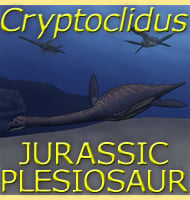Shamosaurus
In Depth One of the earliest known ankylosaurs, Shamosaurus is regarded as being very similar to Gobisaurus, however there is enough fine detail differences in the skulls of the two genera that palaeontologists are confident in assigning these two ankylosaurs as separate genera. Unfortunately there are not yet enough remains to confidently estimate the size … Read more

